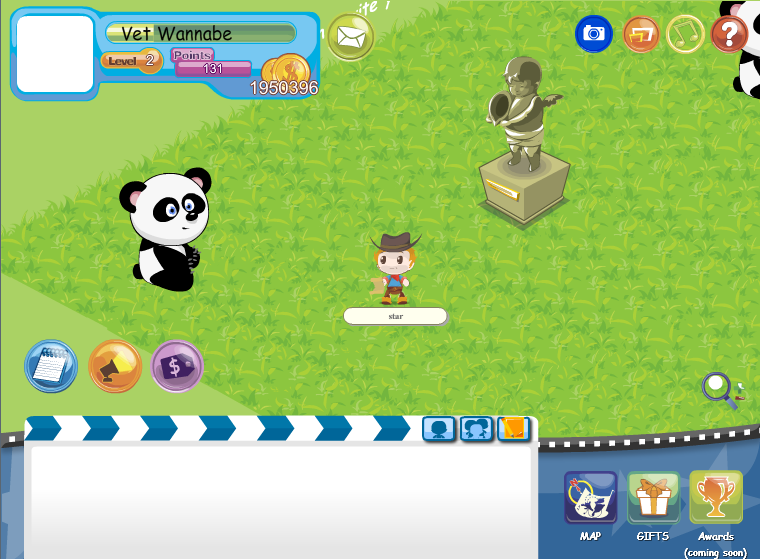-
Development of the game, Spectre
Posted on July 30th, 2010 No commentsJamie talks about their biographical game, Spectre
You can download the podcast here…
http://www.indiegamepod.com/podcasts/spectre-gdc-2010-interview.mp3Or listen to it here…
[wp_youtube]_0SdfMBXPDQ[/wp_youtube]
-
Development of the game, Shatter
Posted on July 27th, 2010 1 commentCorey, lead artist, talks about their game, Shatter
You can download the podcast here…
http://www.indiegamepod.com/podcasts/shatter-gdc-2010-interview.mp3Or listen to it here…
-
Development of the iPhone game, Stair Dismount
Posted on July 24th, 2010 No commentsJani of Secret Exit talks about their iPhone version of Stair Dismount
You can download the podcast here…
http://www.indiegamepod.com/podcasts/secret-exit-gdc-2010-interview.mp3Or listen to it here…
[wp_youtube]tAeTxPINttw[/wp_youtube]
-
What Is The Certainty Factor At Every Moment In Your Game…
Posted on July 22nd, 2010 1 commentHey,
I’ve been watching various people play these social games. One thing that amazes me here is that there is very little opportunity to get confused. Once a person finishes one step, there is a prompt or dialog box that directs the player to do the next thing.
These are “guided interactions” and work well with keeping the casual gamer engaged. At GDC this year, one panel discussed how one game did poorly, but then they had much better guided help in a follow-on game and the 2nd game did a lot better.
I like to coin this term “Certainty Factor”…at every moment of these successful social games, the “Certainty Factor” is at 100%…that means, the player knows 100% for sure…what to do next.
These social game designers leave nothing to chance…they know that without the prompts, most of the players would be lost…and either quit…because they do not know what to do next…or just move onto the next game.
By making sure the “Certainty Factor” is at 100%, the people play the games much longer. Let’s say the player is done planting on their farm, then a nice dialog asks them to help their friend’s farm…and once they do that, another nice dialog may pop up to ask them to send gifts, etc.
These are activities the player would not have thought about themselves…they’ve got 100 other real-life things to think about. The dialogs remind them as well as raise the “Certainty Factor”…so that the players know what to do next at that moment in the game.
As Indie and Experimental game developers, on the edge of innovation, I think it is important to ask…”What is the Certainty Factor at this moment in the game”…make sure it is 100%…once that happens, you’ll be on your way to ensuring that people keep playing the game.
If the “Certainty Factor” is below 100%…ask yourself, “What do I need to change/do to increase the Certainty Factor?” Should I add a dialog prompt? Should I have an arrow pointing at the next goal or place to go…should I have a hint pop up? Whatever is needed to make the Certainty Factor 100% helps.
Also, keep in mind that you can also have the Certainty Factor go to 200%…how is that possible? Well, as a designer, you get to 100% by making the next step absolutely clear…and then you get 100% more for making sure the guidance/dialog you add to raise the Certainty Factor is both FUN and FUNNY. Laughter helps!
In any case, what is the Certainty Factor at each moment in your game? Most of the non-successful games I’ve seen have a factor of usually 0% or even negative. What do you need to change to raise the “Certainty Factor” FOR EVERY MOMENT in your game?
Feedback and clarifications welcome 🙂
-
Development of the game, Rocketbirds Revolution
Posted on July 21st, 2010 No commentsSian Yue from Ratloop Asia talks about their game, Rocketbirds Revolution
You can download the podcast here…
http://www.indiegamepod.com/podcasts/rocketbirds-gdc-2010-interview.mp3Or listen to it here…
[wp_youtube]ODjhpPDoCAI[/wp_youtube]
-
Social Game Flash Engine Tutorial, Part 1: Developing Your Own MMO
Posted on July 19th, 2010 1 commentThis is the tutorial that goes along with the FREE Social Game Flash Engine
Over the following set of articles we aim to give you all of the information you’ll need to create your own flash based social MMO.
For the most part we will be targetting Facebook. Facebook’s 400 million active users makes it an ideal platform to target. Their Flash API allows us to connect with the player and encourage them to share the experience with their peers. Allowing the player to interact and solve problems with their friends can help make for fantastic gameplay.
VetRanch is an example of an open source MMO aimed at Facebook that takes part in an Isometric setting, where the player engages in the exciting role of being a vet. The player must raise animals, care for them and release them when they have been nursed backed to health. We will be taking a look at the VetRanch code, and the way the game is set up and then use this as a basis to help you create your own MMO.
-
Using RightScale To Scale Your Online Game
Posted on July 15th, 2010 No commentsHunter of RightScale talks about their cloud management platform
You can download the podcast here…
http://www.indiegamepod.com/podcasts/right-scale-gdc-2010-interview.mp3Or listen to it here…
-
Development of the student game, Puzzle Bloom
Posted on July 12th, 2010 No commentsDaniel talks about his student team project, Puzzle Bloom
You can download the podcast here…
http://www.indiegamepod.com/podcasts/puzzle-bloom-gdc-2010-interview.mp3Or listen to it here…
[wp_youtube]myf4TSlOHBc[/wp_youtube]
-
Development of the student game, Puddle
Posted on July 9th, 2010 No commentsRemi talks about their student project, Puddle
You can download the podcast here…
http://www.indiegamepod.com/podcasts/puddle-student-igf-2010-interview.mp3Or listen to it here…
[wp_youtube]FfUggM4uB4E[/wp_youtube]
-
Development of the game, Pocket God
Posted on July 6th, 2010 1 commentDave talks about his game, Pocket God
You can download the podcast here…
http://www.indiegamepod.com/podcasts/pocket-god-gdc-2010-interview-final.mp3Or listen to it here…
[wp_youtube]46r40RKgP8k[/wp_youtube]


